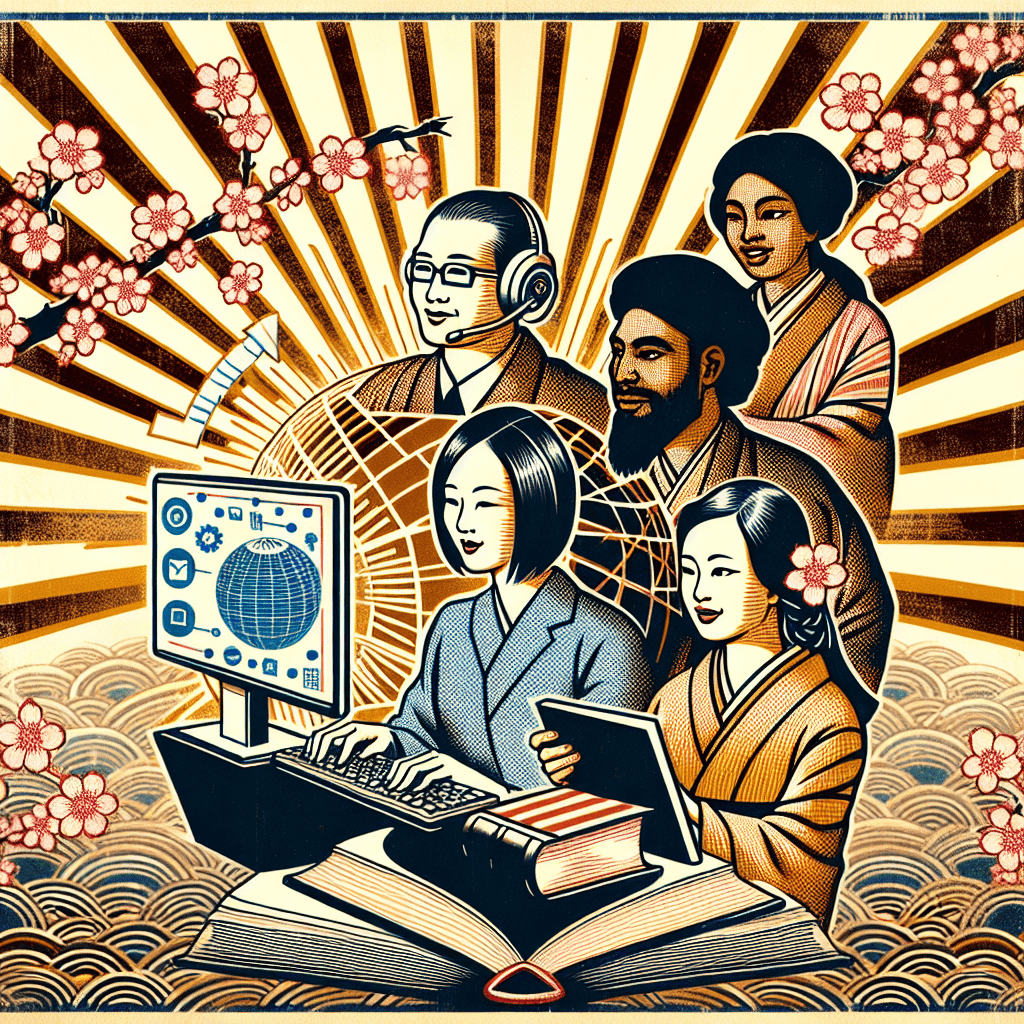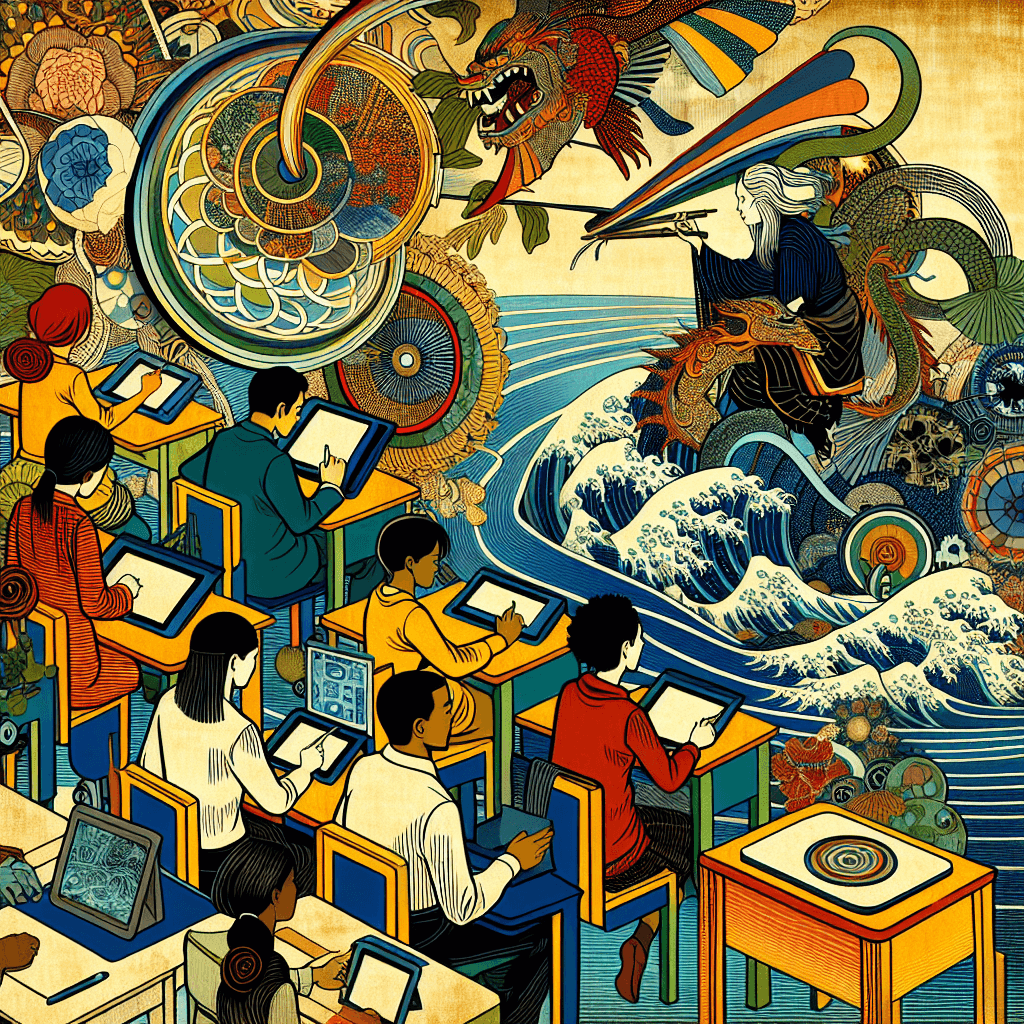EdTech for Social Good: Measuring the Impact of Global Digital Education Initiatives
syndu | Sept. 15, 2024, 11:15 a.m.

EdTech for Social Good: Measuring the Impact of Global Digital Education Initiatives
Introduction
In the rapidly evolving landscape of educational technology (EdTech), the focus is not only on innovation and scalability but also on the profound social impact these initiatives can have. EdTech for social good aims to bridge educational gaps, provide equitable access to learning resources, and foster community engagement. This blog post evaluates the social impact of global digital education initiatives by discussing metrics for measuring social impact, sharing success stories and testimonials, and highlighting community engagement and outreach programs.
Metrics for Measuring Social Impact
To understand the effectiveness of EdTech initiatives in driving social good, it is essential to establish clear metrics for measuring their impact. These metrics help quantify the benefits and identify areas for improvement. Key metrics include:
1. Access and Inclusivity:- Number of Users: Tracking the number of students and educators using the platform.
- Geographic Reach: Assessing the distribution of users across different regions, particularly underserved areas.
- Demographic Diversity: Evaluating the inclusivity of the platform in terms of gender, socioeconomic status, and special needs.
- Improvement in Academic Performance: Measuring changes in test scores, grades, and other academic indicators.
- Completion Rates: Monitoring the percentage of students who complete courses or programs.
- Skill Development: Assessing the acquisition of new skills and competencies.
- Active Participation: Tracking the frequency and duration of user interactions with the platform.
- Feedback and Ratings: Collecting user feedback and satisfaction ratings to gauge the overall experience.
- Retention Rates: Measuring the percentage of users who continue to use the platform over time.
- Community Projects: Evaluating the number and success of community-driven projects initiated through the platform.
- Partnerships and Collaborations: Assessing the impact of partnerships with local organizations, schools, and governments.
- Social and Economic Benefits: Measuring broader social and economic benefits, such as increased employment opportunities and community development.
Success Stories and Testimonials
Success stories and testimonials provide qualitative insights into the real-world impact of EdTech initiatives. Here are a few examples of how digital education is making a difference globally:
1. Khan Academy:- Success Story: Khan Academy has transformed the learning experience for millions of students worldwide by providing free, high-quality educational resources. In rural India, the platform has helped bridge the educational gap for students with limited access to traditional schooling.
- Testimonial:
"Khan Academy has been a game-changer for our community. Students who struggled with math now excel, thanks to the personalized learning paths and interactive lessons." – Teacher in rural India.
- Success Story: BYJU’S, an Indian EdTech giant, has revolutionized learning for K-12 students through engaging video lessons and adaptive learning techniques. The platform has reached millions of students, including those in remote areas.
- Testimonial:
"BYJU’S has made learning fun and accessible for my children. They are more motivated and confident in their studies." – Parent in a remote village in India.
- Success Story: Coursera's partnership with top universities and organizations has democratized access to higher education. The platform offers free and affordable courses, enabling learners from diverse backgrounds to gain valuable skills and credentials.
- Testimonial:
"Coursera allowed me to pursue my passion for data science without the financial burden of traditional education. It has opened new career opportunities for me." – Learner from Nigeria.
Community Engagement and Outreach Programs
Community engagement and outreach programs are vital components of EdTech initiatives aimed at social good. These programs foster collaboration, support local communities, and ensure that educational resources reach those who need them most.
1. Google for Education:- Program: Google for Education partners with schools and organizations to provide tools and resources that enhance teaching and learning. Their outreach programs focus on training educators and supporting underserved communities.
- Impact:
"Google for Education has empowered our teachers with the skills and tools needed to create engaging and effective learning environments. Our students are more engaged and motivated to learn." – School administrator in Kenya.
- Program: Microsoft Education's initiatives include providing affordable devices, software, and training to schools worldwide. Their outreach efforts aim to bridge the digital divide and promote digital literacy.
- Impact:
"Microsoft's support has been instrumental in transforming our school's approach to education. Our students now have access to the latest technology and resources, preparing them for the future." – Principal in a rural school in South Africa.
- Program: Edmodo's platform connects teachers, students, and parents, fostering a collaborative learning environment. Their community engagement programs focus on professional development for educators and support for student learning.
- Impact:
"Edmodo has created a sense of community among our teachers and students. The platform's collaborative features have enhanced communication and learning outcomes." – Teacher in the United States.
Conclusion
EdTech for social good is transforming education by providing equitable access to learning resources, improving educational outcomes, and fostering community engagement. By measuring the social impact of these initiatives, sharing success stories, and highlighting community outreach programs, we can better understand the profound benefits of digital education. As we continue to innovate and expand the reach of EdTech, it is essential to prioritize social good and ensure that education remains accessible and impactful for all learners.





